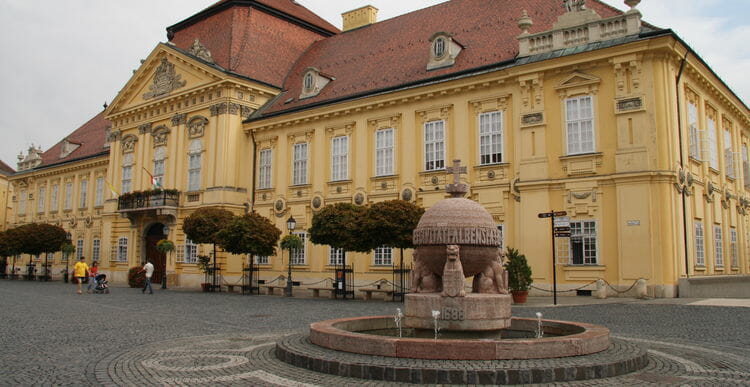Thermal bath Mosonmagyaróvár
Hotels
- Hotel Termal Aqua*** from 71 €/night
- Hotel Aquasol Resort**** from 85 €/night
- Thermal Hotel Superior*** from 100 €/night
Stays
- Accommodiation + wellness from 100 € /night
- Spa minimum from 90 € /night
- Wellness stay from 76 € /night
- Recreation stay from 71 € /night
- Stay for couple from 80 € /night
- Wellness stay extra from 74 € /night
- Relax stay from 75 € /night
- Weekend stay from 92 € /night
Turist information
History
Mosonmagyaróvár is the composite of the names of two cities united in 1939. The name Moson is probably of Slavic origin, which means ’castle in the marsh’. It first appeared in 1046 in the form of Musun, its German name (Wieselburg), which refers to the castle from the Middle Ages which once stood in its place. The name Óvár originates from the Roman military camp called AD Flexum that was located in the area of the today’s Magyaróvár downtown and castle. The name Mosonmagyaróvár first appeared in 1263 as Ouwar; its German name is known from 1271-as Altenburh. The Hungarian anterior component of its name (Ungarisch Altenburg) was to differentiate it from the city of Németóvár (Deutsch Altenburg), which is located east of Vienna. Mosonmagyaróvár and its region have probably been inhabited from the early stages of human history; however, archeological evidence was discovered only in the 5th millennium BC. Archeological evidence from the site of Mosonmagyaróvár was found in the beginning of 1st century AD when the area of the later Moson County was joined to the Roman Empire as part of Pannonia. From that time on, the border of the empire was along the Danube, which was a significant strategic point of the military camp set up by the Mosoni-Duna (Danube). Although establishing Ad Flexum had mainly military reasons, it also helped the development of the settlement emerging next to it since the trade between east and west took place on the military route leading through the area.
Location and climate
Mosonmagyaróvár lies at the confluence of the Danube River and Lajta, 15 km from the Austrian and Slovak borders, the M1 motorway. From the city of Bratislava is only 30 km away. Visitors to this town of winding streets welcome the historic center, the famous castle / ovarian /, the river promenade Lajta, picturesque squares, and historical monuments.
Tourist attractions
Mosonmagyarovar is a very attractive city for its a unique water world Szigetköz, The city is one of the 16 historical cities in Hungary. Óvári Castle was built in the 13th century on the site of Roman remains. Later, in 17th century, was rebuilt in baroque style and took the shape of an irregular rectangle. Agricultural University - founded by Albert Casimir. In the building there you can find a museum with exhibitions. In the courtyard stands a bust of the Austrian poet Nikolaus Lenaua and a stone bench. The castle bridge leads over the canal milling, which was built as a defensive wall. Of the four corner towers of the castle buildings are retained only two. The renovation in the year 1810, the two towers have become part of the building.
Surroundings
Thermal spa of Lipót - Lipót is located between Mosonmagyaróvár and Gyõr , close to the Austrian and Slovak border, in the splendid area of Szigetköz, near the Danube . The spa features six outdoor, one baby, one child and a 33-meter, two medicinal hipbath basins and a 600 m2 adventure pool in a splendid environment.
Natural healing resources
Today the main attraction of the city is the presence of thermal baths that surfaced from a well from 2000 m deep in 1966. The well delivery is 1800 litres of water /minute. The spa is 75°C Natrium-hidrogencarbonate and chloral spring water. In 1967, it was certified to be medicinal water, suitable for the treatment of rheumatic diseases, inflammations, respiratory diseases and a cure for stomach- and bowel conditions.

























